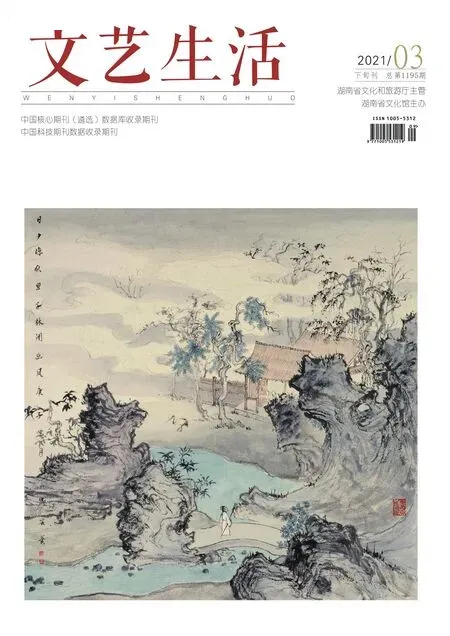She’s Beautiful When She’s Angry:The Female Rage Undertone of Sylvia Plath’s Poem“Daddy”
包 娟
(陕西师范大学 外国语学院,陕西 西安710062)
Abstract:The author starts the essay by introducing the trending cultural term“Female Rage”.After the introduction of the nature and the positive impact of“Female Rage”,the author looks into its literary origin and chooses the outstanding figure in feminist literature,Sylvia Plath,as a case to illustrate.The images of“father”and“husband”in Plath’s poem“Daddy”are analyzed respectively;then the image of violence is noted.At the end of the analysis,the author reaches the conclusion that Plath planted an undertone of anger in the poem.
Key words:Plath;“Daddy”;female
“Female Rage”is the keyword that becomes more and more salient in the worldwide cultural awakening tide which relates to women in all aspects.For example,in the past two years,we have encountered shows like Fleabag,The Marvelous Mrs. Maisel,The Handmaid’s Tale,Why Women Kill,etc.on TV.The shared theme of depicting and conveying the anger of women in these TV shows (pop culture)really indicates the fact that women around the world are becoming more open and more intimate with the layers of their anger (Jessanne Collins,2018).The word“rage”,or“anger”,in this scenario is not a psychological or clinical term.Instead of describing a state of emotion of each individual,“rage”with the modifier“female”inclines to describe the reaction of women worldwide as a mass group against the universal inequality,discrimination,harassment and violence targeted at the female gender.
Apart from merely being depicted and recorded,female rage is getting studied from different perspectives.For example,in her thought-provoking book Rage Becomes Her:The Power of Women’s Anger,the author Soraya Chemaly gives historical and scientific evidence of how women embracing their anger can make a difference to the society.Rebecca Traister,in her book Good and Mad:The Revolutionary Power of Women’s Anger,explores the historical cost and the political value of collective female rage.The power is described and demonstrated (in different women movement cases)to be so strong that makes one wonder where it gets its dynamism.In this essay,I’m going to explore the literary legacy that had endowed this powerful emotion with empathy and vitality.
By looking back into the literary history,we can find that the theme of female rage has been thoroughly experimented on,whether consciously or subconsciously,by a wild range of outstanding figures in feminism literature,among whom Sylvia Plath is the most important writer that cannot be overlooked.She is one of the pioneers who inspired women to vent their anger by writing (Wei Lina, 2013). Her representative work“Daddy”is the finest example of expressing feminist appeal of anti-patriarchy by using symbolism.
“Daddy”was written on October 12th 1962.At this time,Plath had suffered long from clinical depression and had just separated from her husband.She committed suicide four months later after writing“Daddy”.To some extent,“Daddy”is the accentuated work that generalizes Plath’s personal experience and represents her aesthetic ideas(Andrew Spacey,2019).In the following part of the essay,I’m going to analyze the two masculine (or say,patriarchal)figures depicted in the poem.
1.The image of“daddy”.
The father image in this poem is closely connected with the image of death.The description concerning the father can be roughly divided into two phases:when he was alive and when he was dead.
When the father was alive,“I”,the image of the daughter,lived under his shadow.When“daddy”was around,she was“Barely daring to breathe or Achoo”.(The influence continued for thirty years.)Trying to talk to her own father is like sticking her tongue“in a barb wire snare”.
When he was dead,the repressed tone of the daughter transferred into resentment and regret.She cursed her father for abandoning her by passing away.(“Bit my pretty red heart in two/I was ten when they buried you.”)She also showed affection and surges of nostalgia towards her father. (“I used to pray to recover you.”“At twenty I tried to die/And get back,back,back to you.”)
The neurotic usage of words shows the daughter’s contradictory and complex sentiments towards her father.She is angry for being repressed and then abandoned;while at the same time she clings to the fantasy of being cared and accompanied by her father.Plath uses second person to refer to the father in this poem,which shows the daughter’s eager of communication.And since the mutual communication is out of the question,the resentment,or rage,is justifiable.
2.The image of the husband.
Plath uses two stanzas to describe the husband image.In stanza 14,the reason for including a husband in is because of“a love of the rack and the screw”,so the basic tone of the relationship is set here:toxic and torturous.In stanza 15,the poet uses a metaphor, comparing the husband to a vampire who“drank my blood”for seven long years,to show how abusive he was.
In my opinion,the poet more or less sees the husband image as a substitution for the father image.The repressive nature the father possessed is inherited by the husband.A sense of continuity of the patriarchal authority is preserved.To“I”,or say,the self reflection image of Plath,the repression and the misery are prolonged.So is the rage and the resentment.
After analyzing the two repressive,patriarchal images,I want to talk about another important image in the poem:violence.
The common method of venting anger is through violence.In the poem,the poet resorts to the violent image of“killing”.The word“kill”appears three times in the poem.And the objects of the verb are respectively“daddy”and“the vampire”(husband).From Greek mythology to Shakespeare,from Balzac to Dostoevsky,patricide has always been pictured.It is because in the western literary tradition,the idea of patricide stands for the spirit of resistance(Liu Zhongyang,2006).I have every reason to believe that Sylvia Plath uses the image of patricide to express the appeal of overthrowing patriarchy and earning freedom and respect as a woman.
Killing, together with other disturbing images presents an angry woman’s wish of breaking free and revenge.The images and the emotion of the poem are so fierce that I was convinced Plath was angry when she wrote down the poem.
Although Plath passed away four months later after writing down the poem“Daddy”,the spirit of fighting and breaking free,the tradition of recording the psychological pain caused by one’s gender are preserved.Today,we can still use our pens to depict the world we live in,as a female.
——喜迎十九大 追赶超越在陕西

